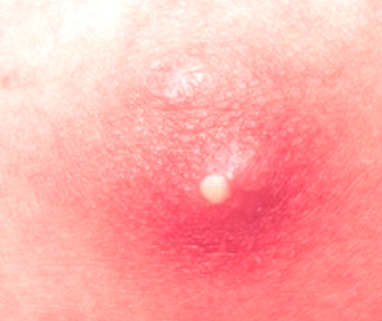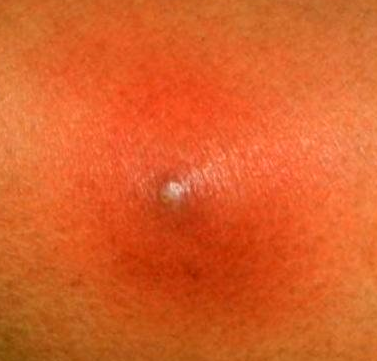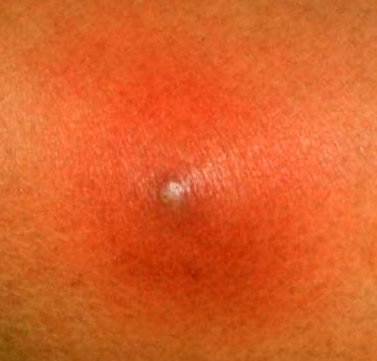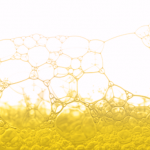A carbuncle is a skin disorder characterized by formation of pus-filled bumps or clusters of boils. It often causes pain. Bacterial infection of hair follicles and subsequent inflammation result in development of carbuncles beneath the skin’s surface.
Furuncles or boils first arise as reddish tender bumps. They quickly fill with pus and keep becoming bigger and more painful till finally bursting open and leaking fluids. A carbuncle is a bunch of such interconnected boils in an infected area under the skin.
It is easy to treat a single boil via home remedies. Never squeeze or manually rupture a boil as doing so can spread the infection. The presence of a boil or a carbuncle along with extreme pain and fever for over two weeks requires treatment by a doctor.
Symptoms of a carbuncle
It is important to understand the features of a boil in order to properly identify the signs and symptoms of a carbuncle.
Boils can develop on any part of the body but are more prominent on the neck, face, thighs, armpits, and the buttocks. These regions have widespread hair growth as well as a greater propensity to elicit sweating and friction. A few common signs and symptoms of boils are as follows:
- Boils erupt from the skin as painful reddened bumps. They can be as big as a pea.
- The surrounding skin may elicit elevated redness and inflammation.
- Pus will gradually fill up the insides of a boil and thus contribute to an increase in the overall size. On occasions, boils can grow to nearly the size of a golf ball.
- A yellowish white tip will then develop at the center, the boil will rupture, and pus will flow out of it.
- The pain will slowly subside after pus has completely drained from the boil. Small boils may heal without leaving scar marks, but a large boil can cause scarring after healing.
A carbuncle is a group of boils that predominantly feature on the back of neck, thighs, and shoulders. Its symptoms are listed below:
- As opposed to a single boil, a carbuncle can cause more serious and deeper infections.
- Patients may feel generalized weakness, a feeling of uneasiness, or malaise.
- Chills along with fever may also be noticed
- It can cause widespread scarring.
Complications of a carbuncle
A carbuncle rarely results in any health complications. However, if complications occur, then they can be very severe as listed below:
- The bacterial infection occurring within a carbuncle can travel into the bloodstream, and via it, to different parts of the body. Such migration of bacteria all across the body can result in sepsis or life-threatening widespread blood poisoning.
- Sepsis can cause infection of vital body organs such as the bones or the heart. Some of the accompanying symptoms include breathlessness, fever with high temperatures, and rapid heartbeat, etc. The patient may also die from septic shock which arises due to a sudden and rapid drop in the blood pressure.
- A carbuncle can also result in the growth of some bacterial strains that develop resistance to varied antibiotics.
- Nearly half of different staph bacteria strains present in health care institutions tend to be resistant to methicillin and other common kinds of antibiotics. It is also possible to get infected by such drug-resistant bacteria in normal community settings.
Causes of a carbuncle
- A carbuncle is caused due to infection of 1 or more hair follicles by the staph bacteria. They typically appear in the nasal pathways, the skin, and throat.
- People with tears, scratches, cuts, or breaks in the skin are more prone to experiencing bacterial infection of such areas. Such infected regions may develop into a carbuncle after some time.
- Any kind of infection in the body results in accumulation of white blood cells in the affected regions. This is what eventually leads to inflammation and development of pus.
People of all races, ethnicities, ages, etc. can suffer from the development of a carbuncle. Even healthy people can develop a carbuncle. However, there are certain risk factors, as listed below, which can increase the vulnerability towards developing a carbuncle.
- People with weakened immune systems such as HIV patients, etc. have reduced capacity to ward off infections. They are therefore more prone to developing carbuncles.
- Close or intimate contact with a person with staph infection increases the risk.
- Diabetic patients also have low defense mechanisms against invasion by pathogens, and hence more susceptible.
- Presence of varied skin conditions like eczema, acne, etc., can damage the outer protective layer of the skin. Hence, people with such skin diseases are more likely to suffer from a carbuncle.
Treatment of a carbuncle
- Mild cases of boils can be treated with home remedies. A warm compress can be used for pain alleviation and quickening the natural process of pus discharge.
- Large boils or carbuncles require medical assistance. Doctors will make an incision on the carbuncle and help drain the pus. The resultant wound, if any, is then sutured and bandaged. Antibiotics may also be prescribed by the doctor. This procedure helps in quick recovery, rapid relief from pain, and minimal or no scarring.
Carbuncle pictures






